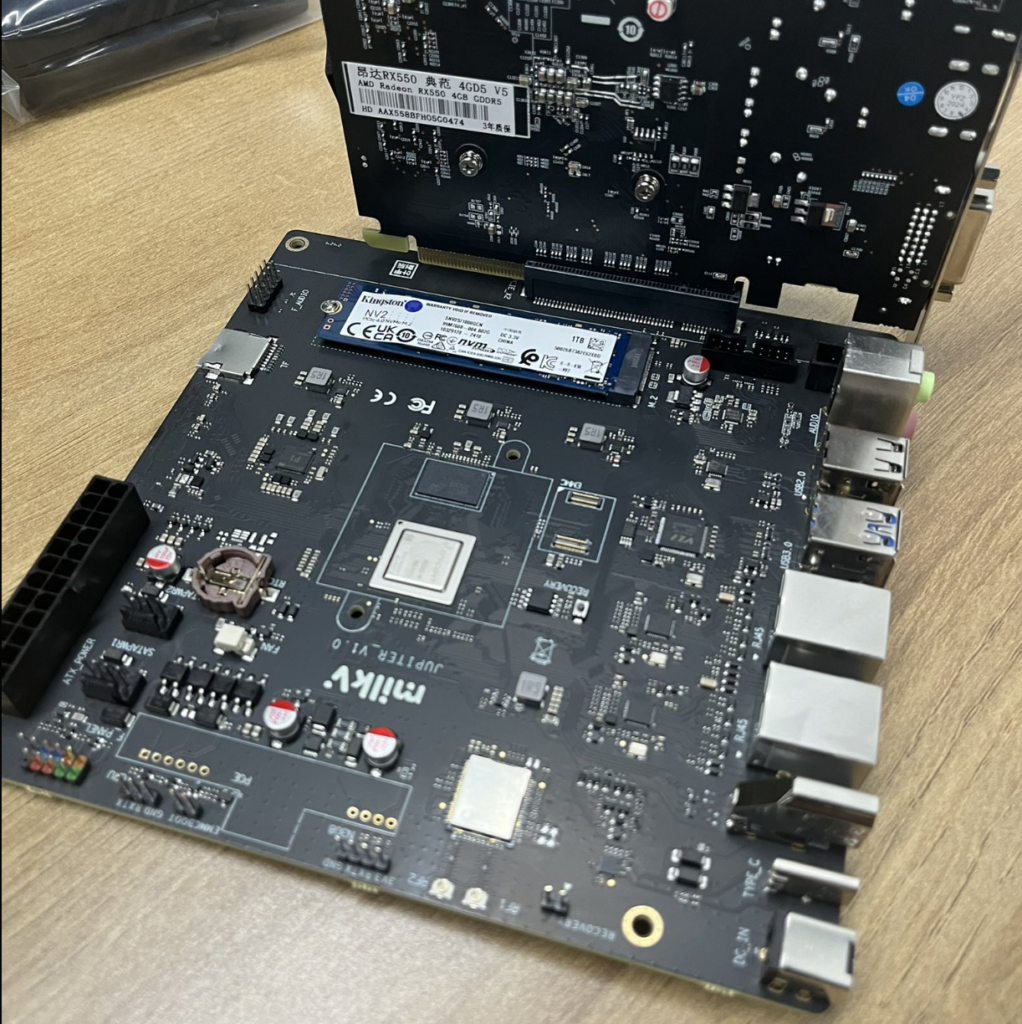Hot on the tails of its Ubuntu partnership, RISC-V-focused outfit Milk-V have announced its latest offering, the Milk-V Jupiter in an ITX form factor, intending to be your next low-power desktop.
There isn’t much to go on yet, so I’ll update this as and when information becomes available but let’s get to some speculation first, shall we?

Table of Contents
Milk-V Jupiter Specifications
In the teaser image they released above, you can see that we have a full-size PCI Express connector and this is arguably the most interesting connector on offer in this teaser. Support for devices slotting into that, however, is another matter.
My best guesstimates on what we have here:
- 2x USB Type-A 3.0
- 2x USB Type-A 2.0
- microSD
- 2x RJ45 (Hopefully 2.5Gb?)
- HDMI
- USB-C?
- DC Power In
- M.2 M-Key (Supporting up to 2280?)
- 3.5mm Audio Jack
Some of those are educated guesses, for example, I’m being hopeful rather than confident that there are 2 of each USB Type-A as we’ll be rather limited on I/O if it’s only 1 of each.
2.5GbE on both RJ45 connections would be great and an M-Key M.2 slot for NVMe is lovely as it was a massive benefit to the StarFive VisionFive 2 in performance testing. If Milk-V intends for users to buy this as a desktop offering as opposed to a dev kit, storage is going to be very important.
Which SoC are we Getting?
There has been an awful lot of speculation on which RISC-V SoC we’re going to see in the Milk-V Jupiter, with the Eswin EIC7700, SpacemiT K1, and StarFive JH8100 all mentioned (among others) on various Reddit and WeChat posts. The Milk-V Oasis already comes with the Sophgo SSG2380 so I’d imagine they’ll go with something else on this. Hopefully.

RISC-V PC for Everyone
It’s a big tagline, and I’m curious to see what the rest of the announcements give away.
As someone who’s been testing another ITX desktop replacement in the form of the Radxa ROCK 5 ITX (based, however, on the Rockchip RK3588 ARM SoC, not RISC-V) I’ve been slowly coming around to the idea of this form factor.
What I’ll be interested to see though, is what other I/O is on offer here. Will there be power available via a traditional ATX power supply? Will it take standard PC accessories such as CPU coolers (not that you’re likely to need them)? Will there be SATA connections available for storage?
I’ll keep my ears to the ground (otherwise known as bugging the poor Milk-V staff constantly) and as soon as I have additional information, I’ll update this article, so do keep checking back to stay up to date with how the Milk-V Jupiter is progressing.
In the meantime, I’ll get to benchmarking the Ubuntu-powered Milk-V Mars that recently landed on my doorstep!
Update 28/06/24
Thanks to images posted on Twitter but Milk-V we now see that it’s the SpacemiT M1 SoC, so none of the options mentioned above were on the money, oops. The SpacemiT is penned as a higher frequency version of the SpacemiT K1, which is an Octa-Core (8-core) X60 64-bit RISC-V SoC with support for the RISC-V 64GCVB and RVA22 standards. On a description of another M1-based machine, it states that it’s faster than a multi-core Cortex-A55 configuration but let’s see.

The pictures show the previously mentioned PCIe Express slot with an AMD Radeon RX550 installed, and this slot is running at PCIe Gen2 speeds with 2 lanes (PCIe Gen2x2).

Other than that, we can see there’s a PoE header (unpopulated in the photos but perhaps it will be an option to purchase), onboard WiFi, front panel headers, and eMMC. The RJ45 connections have been confirmed to be 2x1GbE which might not be ideal for those of you looking at creating a RISC-V NAS out of it but it’s going to be good enough to make a start!
As and when we get more information drip fed to us, I’ll update it here!